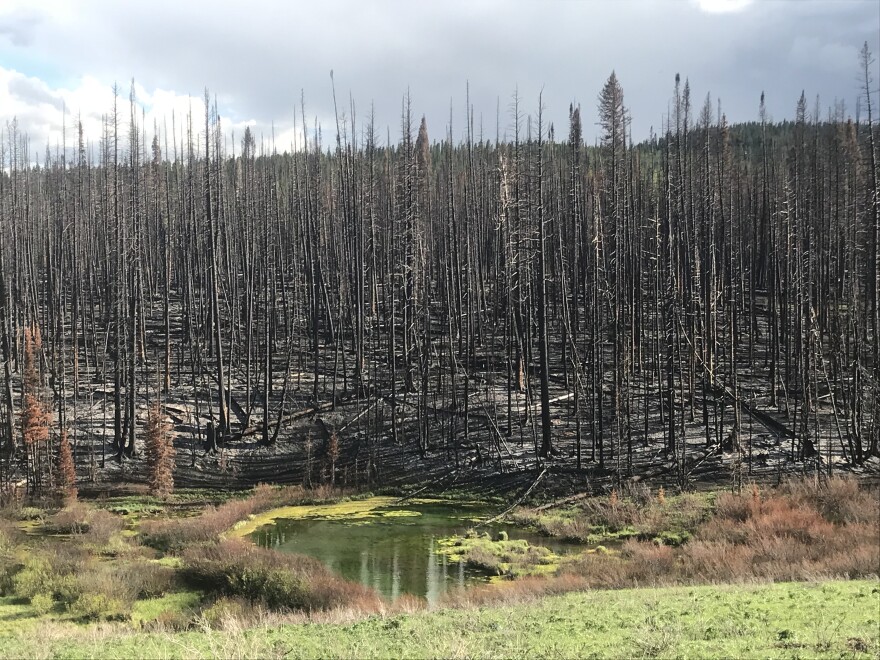In 1988, Yellowstone National Park and surrounding areas experienced a huge wildfire. And only a couple of decades later, some of those areas burned again.
Nathan Gill, an assistant professor of fire ecology at Texas Tech University, has been studying how this affects trees' seeds dispersal. It turns out more frequent fires don't allow enough time for the tree to grow back and spread its seeds.
"It might take a longer time for lodgepole pine, and perhaps other species as well, to fill in these large burned patches," said Gill. "And there may be some areas where different plants sort of take advantage of that opening instead."
And that may ultimately change the landscape.
Gill said humans need to be aware that fire patterns are in large part changing due to human activities.
"Climate change and fire suppression [are] two of the primary activities that are changing these patterns," he said. "And so we need to realize that we are changing these patterns of fire, and that's changing the way that these ecosystems work. And ultimately, the ecosystem services that are available for us."
Gill studied the 2016 Berry Fire in Grand Teton National Park as a case study.
Have a question about this story? Contact the reporter, Kamila Kudelska, at kkudelsk@uwyo.edu.








